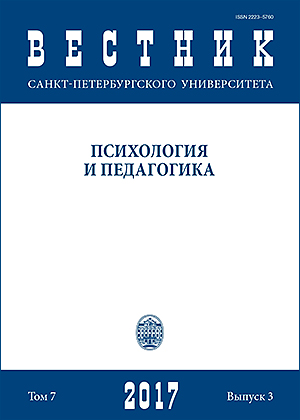The study of explicit and implicit representations of curiosity
DOI:
https://doi.org/10.21638/11701/spbu16.2017.304Abstract
Curiosity is usually viewed as an urge to develop and learn, based upon intrinsic motivation. Therefore, it important to find out how different people represent curiosity. The study aimed to investigate mental representations of curiosity in all their variety. Participants were asked to name any features of the concept ‘curiosity’ that came to their minds, and then to create a metaphoric comparison, illustrating this concept. Sample: N=45, aged 18-28 (M = 20,14), students of SPSU. Curiosity was depicted by participants as something that is spontaneous and related to the process of searching new information. It is associated with obstacles, such as social rules or inaccessibility of an object that a person is curious about. Curiosity, on the one hand, is connected to cognitive processes, specifically visual perception. On the other hand, being curious means being childish, tactless, naïve. A discrepancy was discovered between explicit and implicit representations of curiosity. Explicit representations of curiosity are more stereotypical: it is wrong to demonstrate curiosity, but feeling curious is a pleasant emotional state, that evokes interest and activity when interacting with the world. Implicitly curiosity seems to be uncontrollable, but helpful if one wants to obtain usually inaccessible or hidden information.
Keywords:
curiosity, metaphor, representations of curiosity
Downloads
References
Downloads
Published
How to Cite
Issue
Section
License
Articles of "Vestnik of Saint Petersburg University. Psychology" are open access distributed under the terms of the License Agreement with Saint Petersburg State University, which permits to the authors unrestricted distribution and self-archiving free of charge.




